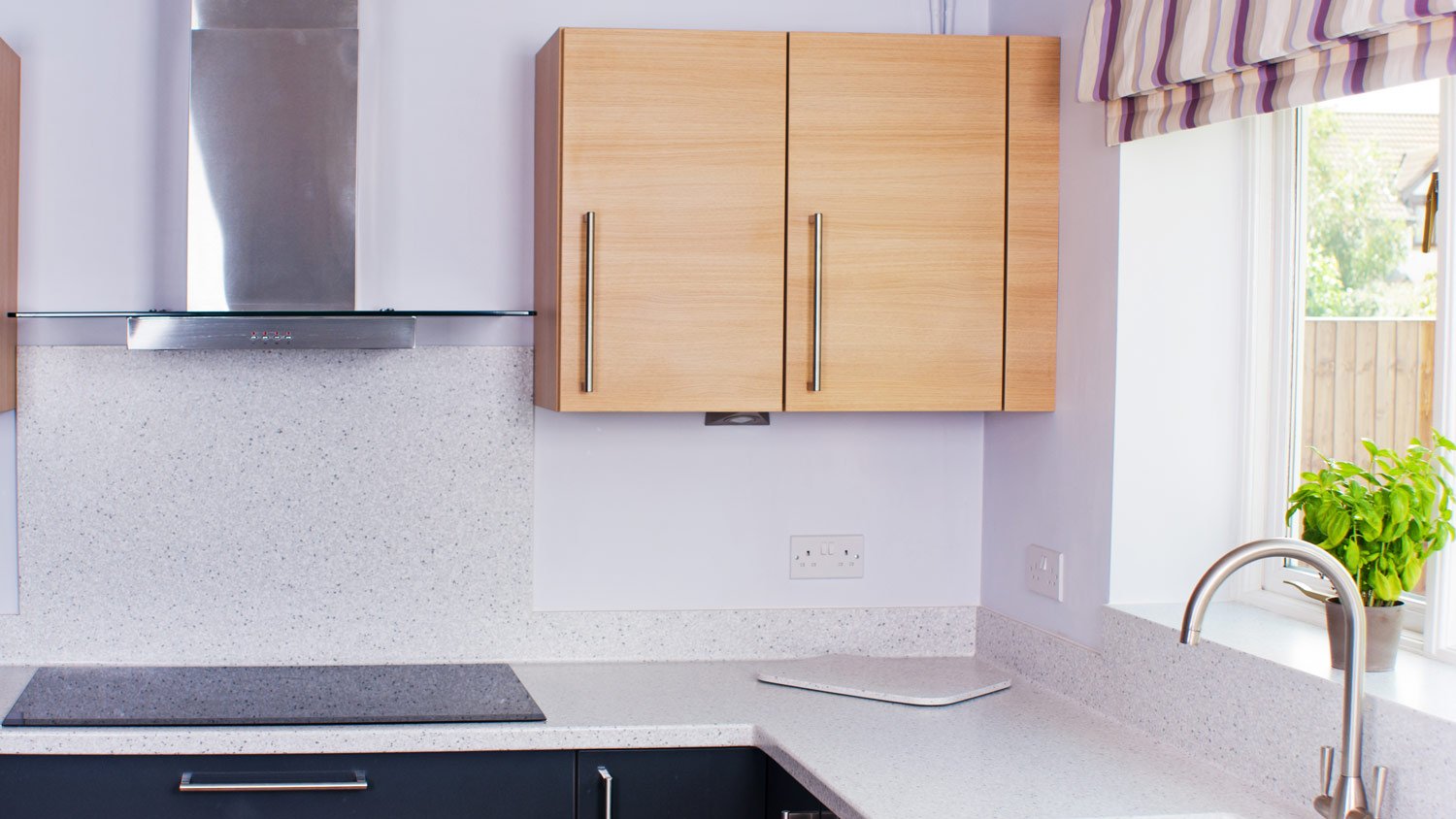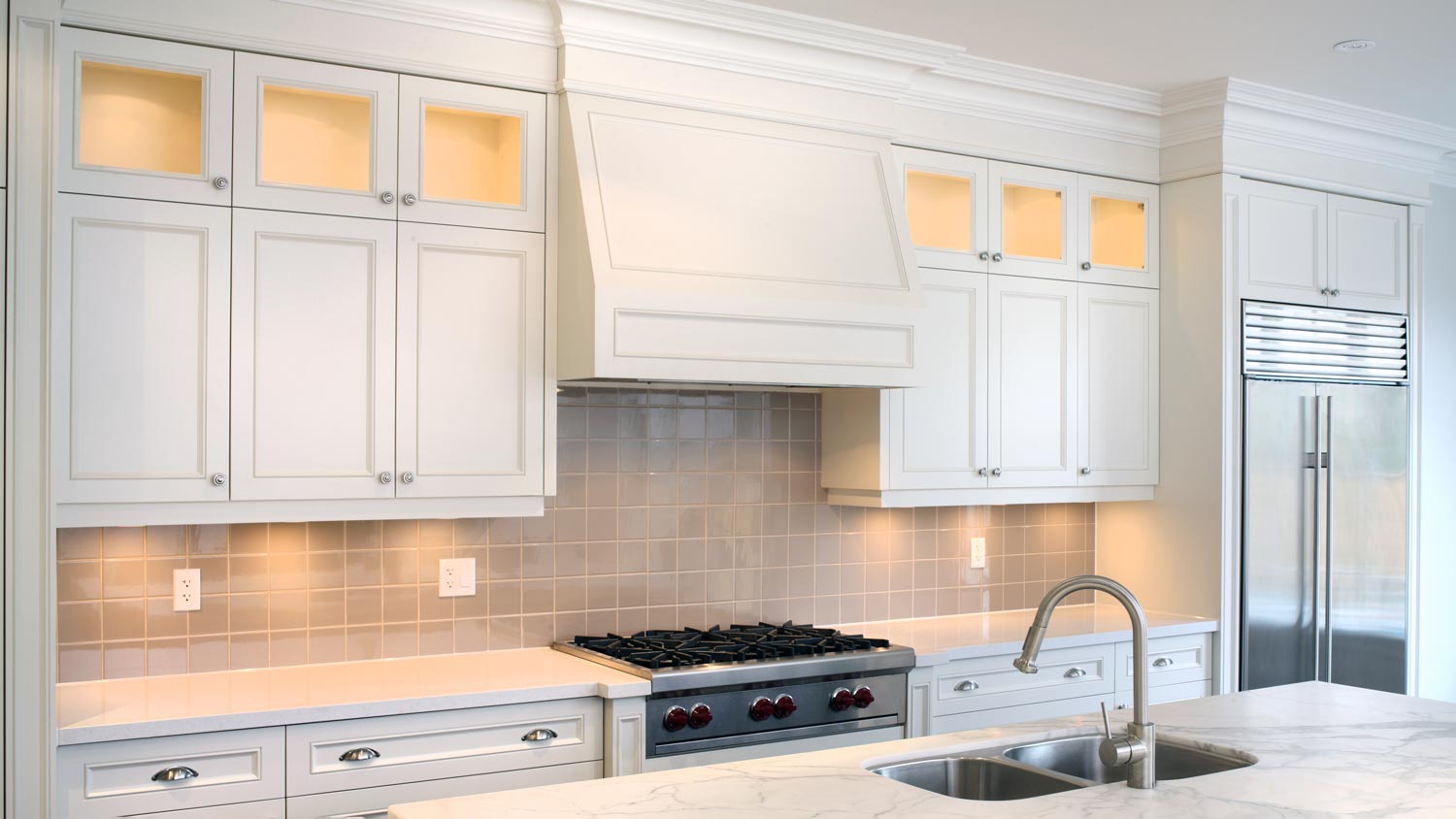
Butcher block countertops are a popular and durable choice for active kitchens. Learn how much it costs to install butcher block counters and what factors may affect pricing.
Laminate can mimic more expensive countertop materials for a fraction of the cost


Laminate countertops have a wood core and a top layer that includes printed paper.
This type of countertop is highly affordable and can be installed by a novice DIYer.
Laminate is less durable than other countertop materials and lasts 15 to 30 years.
Laminate countertops are often dismissed as cheap and tacky. However, modern-day laminate is anything but. Laminate can create a high-end look in your kitchen without a high-end price tag to match. This guide explains how laminate countertops are made and the pros and cons so you can decide if this material is right for you.
Laminate countertops (often called Formica® countertops after the original manufacturer of this material) are made from a sheet of laminate fused to a thicker sheet of medium-density fiberboard (MDF) or particleboard. The laminate consists of a bottom layer of treated kraft paper, a middle layer of decorative paper that can mimic more expensive countertop materials (like marble or granite), and a top plastic layer that helps protect the countertop from everyday wear and tear.
Laminate is commonly used in kitchens but can also be used in the bathroom. However, excessive moisture can damage laminate, so keeping it as dry as possible is essential to retaining its luster.

Laminate countertops are more affordable but less durable than other countertop materials. Here are the main pros and cons of laminate countertops.
| Pros | Cons |
|---|---|
| Low cost | Cannot be resurfaced |
| Easy installation | Low durability |
| Wide range of designs | Relatively short lifespan |
| Easy to clean |
The most significant benefit of choosing laminate countertops is their low cost compared to other countertop materials. With an average cost of $1,250, laminate is an accessible option for homeowners with wide-ranging budgets. Laminate countertops are also easy to work with and can be installed by a DIYer to save on installation costs.
Because laminate is made from printed paper, it comes in many high-end designs without the matching price tag. And laminate is simple to clean; you don’t need to use a special cleaner like you might with a solid stone surface.
Unlike other countertop materials, laminate countertops can’t be resurfaced. They are also less durable and can scratch, burn, and chip easily. You’ll need to use cutting boards and hot pads to prevent irreparable damage.
Finally, laminate doesn’t last as long as other countertop materials, so it’ll need to be replaced sooner, negating any cost savings you enjoyed when you first installed it.
Cost is one of the biggest benefits of this material. Laminate countertops cost $850 to $1,740 to install, depending on the size of the counter and the type of laminate you choose. Expect to pay more if you choose a special finish, like antimicrobial or high-durability, or a unique edge style, like Ogee or Dupont. Laminate countertops with an MDF substrate are also more expensive than those with a plywood substrate.
Laminate is a DIY-friendly material you can easily install without much prior knowledge. As long as the installation is straightforward, you can save $400 to $800 in labor costs by installing laminate countertops yourself. However, if your kitchen is complex and you need to join several pieces of countertop together, hiring a local countertop contractor is the best way to ensure the countertops are installed properly without unsealed seams between joints.

Laminate is a popular countertop choice, but many homeowners prefer durable stone options. Here’s how laminate compares to granite and quartz.
Laminate and quartz countertops are both manufactured to resemble other materials, like granite or marble. But that’s where their similarities end. Laminate is made from layers of paper bonded onto a wood core, while quartz combines quartz minerals with resin. This manufacturing process gives quartz the edge in terms of durability and longevity. Quartz is naturally nonporous and can last for decades, while laminate is more prone to damage and may only last one or two decades.
Granite countertops are made from solid slabs of stone extracted from quarries, making them highly durable. Laminate’s durability is much lower but costs significantly less than granite. Granite also requires regular sealing to protect the porous stone, adding maintenance costs to the total budget. Granite countertop installation costs between $2,000 and $4,000, which puts it over many homeowners’ price ranges.
From average costs to expert advice, get all the answers you need to get your job done.

Butcher block countertops are a popular and durable choice for active kitchens. Learn how much it costs to install butcher block counters and what factors may affect pricing.

Are you leaning towards solid surface countertops? If so, you've likely come across Corian®. Find out how much Corian® countertops cost so you can plan your project.

Countertop repair costs may be the deciding factor between replacing or repairing your counter. Let’s break down the cost to repair, resurface, or relaminate.

Looking for a unique countertop material that’s low maintenance, durable, and cost-effective? Check out the pros and cons of porcelain countertops.

Whether installing new counters in your kitchen or trying to anchor the ones you have, here are 6 tips for how to secure a countertop to a cabinet.

It's important to get the dimensions right if you're installing new kitchen countertops. Read on to find out more about the standard depth of countertops.